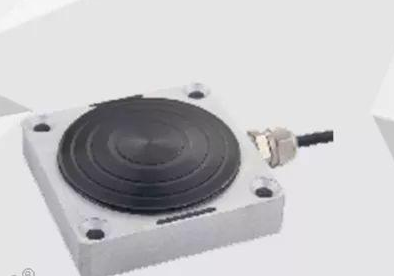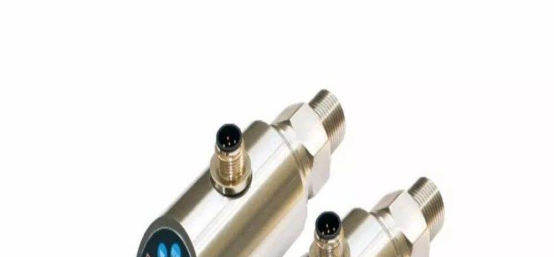How to use a resistance strain gage load cell?
Working principle of resistance strain type load cell
The resistance strain type load cell is based on such a principle: an elastic body (elastic element, sensitive beam) is elastically deformed by an external force, and the resistance strain gauge (conversion element) attached to its surface is also deformed along with it; the resistance strain gauge is deformed After that, its resistance will change (increase or decrease). Then the corresponding measurement circuit converts this resistance change into an electrical signal (voltage or current) output, thereby completing the process of converting external force into an electrical signal.
It can be seen that resistance strain gauges, elastomers and detection circuits are the indispensable main parts of resistance strain type load cells.
Resistance strain gauge
The resistance strain gauge is a resistance strain gauge which is mechanically arranged on a substrate made of an organic material, that is, a strain gauge.
Elastomer
An elastomer is a structural member with a special shape. It has two functions. The first is that it can withstand the external force on the load cell and generate a reaction force against the external force to achieve a relatively static equilibrium. The second is that it must generate a high-quality strain field (area) to be stuck in this area The resistance strain gage is ideal for the task of converting strain electrical signals.
Detection circuit
The function of the detection circuit is to change the resistance change of the resistance strain gauge into a voltage output.

Precautions when testing resistance strain gauge load cells
Electrical connection
(1) The signal cable of the load cell should not be arranged in parallel with the power line or control line (for example, do not put the sensor signal line and the power line and control line in the same pipeline). If they must be placed in parallel, then the distance between them should be kept above 50CM, and the signal wires should be sheathed with metal pipes. No matter what the situation is, the power and control wires should be twisted together to a degree of 50 RPM.
(2) The output signal readout circuit of the load cell should not be placed in the same box with equipment that can cause strong interference (such as thyristors, contactors, etc.) and equipment with considerable heat generation. If this cannot be guaranteed, , You should consider setting a baffle isolation between them, and placing a fan in the box. The electronic circuit used to measure the sensor output signal should be equipped with an independent power supply transformer as much as possible, instead of sharing the same main device with the contactor and other equipment power supply.
(3) All wires leading to or from the display circuit shall be shielded cables. The connection and grounding points of the shielded wires should be reasonable. If it is not grounded through the mechanical frame, it is connected to the ground, but the shielded wires are not grounded after being connected to each other, and it is floating.
(4) If the load cell signal cable needs to be extended, a special sealed cable junction box should be used. If this type of junction box is not used, but the cable is directly connected to the cable (soldering end), special attention should be paid to the seal and moisture resistance. After connection, the insulation resistance should be checked and the standard (2000 ~ 5000M) must be reached. The sensor should be re-calibrated. If the signal cable is long and high measurement accuracy is guaranteed, a cable compensation circuit with a relay amplifier should be considered.
For mechanical installation
(1) The mounting surface of the base on which the sensor is installed should be flat and clean without any oil film, adhesive film, etc. The mounting base itself should have sufficient strength and rigidity, and generally requires higher strength and stiffness than the sensor itself.
(2) The load cell should be handled lightly, especially the small-capacity sensor made of alloy aluminum. Any impact or drop may cause great damage to its measurement performance. For large-capacity load cells, in general, it has a large self-weight, so it is required to use appropriate lifting equipment (such as chain hoists, electric hoists, etc.) when handling and installing as much as possible.
(3) Level adjustment: Level adjustment has two aspects.
1. The mounting plane of the single sensor mounting base should be leveled with a spirit level;
(2) Use structural accessories with automatic positioning (reset) as much as possible, such as ball bearings, joint bearings, positioning fasteners, etc.
(3) It means that the mounting surface of the mounting base of multiple sensors should be adjusted to a horizontal surface (level) as much as possible.
(4) Try to set up some "baffles" around the load cell, and even cover the sensor with a thin metal plate. This can prevent debris from contaminating the sensor and some moving parts.
(5) The loading direction of each load cell is determined, and when we use it, we must load in this direction. Lateral forces, additional bending moments, and torque forces should be avoided as much as possible.
(6) There are some accessories on the scales that must be connected to the scale body (such as the conveying pipe of the container scale, etc.), we should make them as soft as possible in the direction of the load axis of the sensor to prevent them from "eaten" the sensor Caused by the real load.
(7) Although the load cell has a certain overload capacity, the sensor should still be prevented from being overloaded during the installation of the load cell. It should be noted that even a brief overload may cause permanent damage to the sensor. In the installation process, if it is really necessary, you can replace the sensor with a pad of the same height as the sensor, and then replace the sensor. In normal work, the sensor should generally be provided with mechanical components for overload protection.

If you want to know more, our website has product specifications for sensor, you can go to ALLICDATA ELECTRONICS LIMITED to get more information

